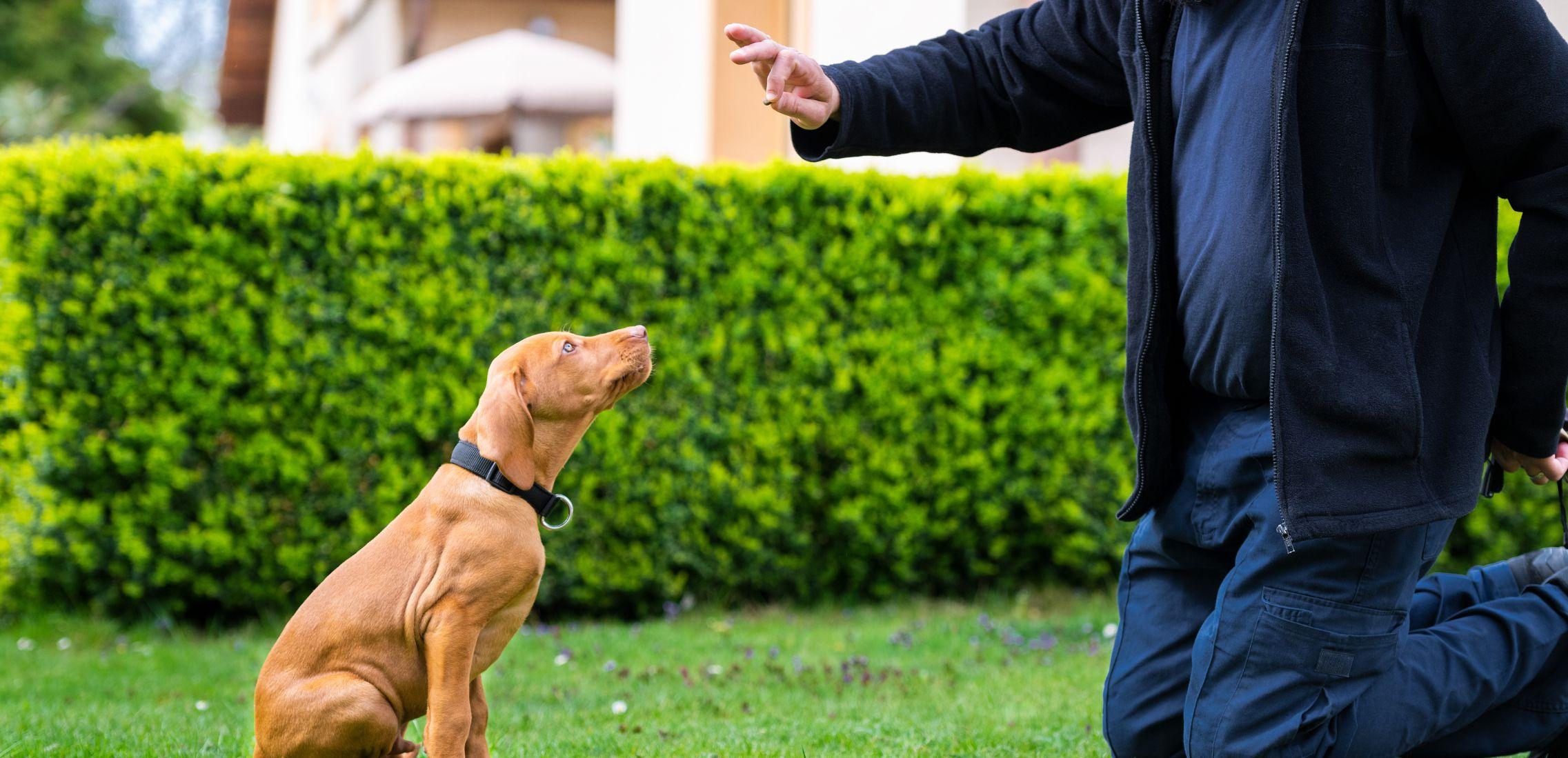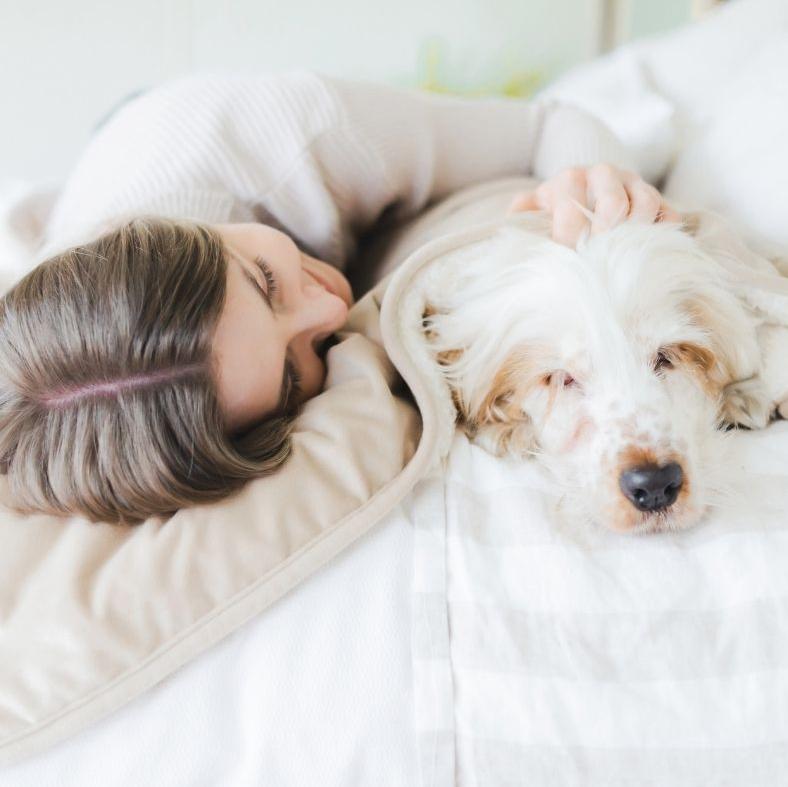Your Cart is Empty
Get Up To 35% OFF & Free Delivery
Get Up To 35% OFF & Free Delivery
Get Up To 35% OFF & Free Delivery

Although it probably won’t be your dog’s favorite word, to teach your dog the word ‘No’ is an important step in their training. It’s what will ultimately help keep them safe and out of mischief.
Having a clear command that your dog understands, such as ‘No’ or ‘Leave’, will reduce the risk of them eating things they shouldn’t, keep them from going into dangerous places and generally stop them from doing things that could be harmful to themselves or others.
There are a number of different training tools that can be implemented to teach your dog the ‘No’ command. And whether your pup responds best to food or fuss, starting when they are young gives you the best chance at success.
We’ve put together a handy guide on how to teach your puppy ‘No’, exploring the best ways to achieve a successful outcome, how long the process may take, as well as tackling any training issues that may arise.
Redirection and behavioral management are super important skills for any pet parent to teach their pup. To teach a puppy ‘No’ is to be able to keep them safe, to redirect unwanted behavior quickly and keep their curiosity from getting them into tight spots.
Dogs thrive with structure and routine, and teaching them the rules of what they can and can’t do will make for a happier, healthier pooch.


This command should always be implemented in a positive way, reinforced with things your dog likes such as treats or fussing. Shouting at your puppy will only frighten and confuse them, making them less likely to trust you, and as a result making training a lot more difficult.
Puppy training can sometimes feel like a frustrating and time-consuming task, but with a regular routine, positive reinforcement and patience, your pup will get the hang of things before you know it.
Teaching your puppy the ‘No’ command will take time and perseverance, but by following the right steps and creating a regular routine you will see your pup begin to respond.
Here is a step by step guide on one of the most effective methods for how to teach your dog the ‘No’ command, to get your started on your training journey:
While many people use the word ‘No’ as their chosen command, you can use whatever works best for you. Things like ‘Leave’ or vowel sounds such as ‘Ah’ or ‘Uh uh’ can work particularly well. You may also choose to use a hand gesture as well, so that your dog also has a visual clue to work with.
Once you have decided on your ‘No’ command it is vital not to stick to it and not change it halfway through the training process; this can confuse your pup and undo the hard work you have achieved up to that point.


Dogs respond best to positive reinforcement, especially in a training environment. If a dog feels calm and safe they are more likely to be receptive to commands - one of the most effective forms of positive reinforcement is treats.
Dog safe treats and tidbits are an excellent training tool, giving your dog something to focus on and work for. However each dog is different and so may respond better to different stimuli, such as fuss, praise or toys.
Now comes the tricky bit - getting your dog to follow through with the command. Hold the treat out to your dog, about 6 inches away from them so they can see and smell it, and call their name.
When they try to take the treat, close your hand and say your chosen ‘No’ command.
Your dog will likely sniff at your hand for a minute or two, but as soon as they stop, use a ‘Yes’ command and reward them with the treat. The aim of this is that your dog learns that they only receive the treat once they complete the command, thus securing it as a desired behavior.


Once you’ve tried the above technique a few times, you can begin to advance things a little. You can try putting the treat on the ground and getting them to leave it until you allow them to take it. As your pup progresses, you will be able to make them wait for longer periods of time before they are allowed to have the treat, further strengthening the command.
The training routine should then be repeated several times a day everyday until it becomes evident that your dog has learnt and is adhering to the ‘No’ command.
Once you have set a routine for your pup it is important not to stray from it, as this can confuse your dog and hinder their progress.
There isn’t a set amount of time by which your puppy will learn the ‘No’ command. Every dog is different and will therefore learn and retain information at different speeds.
The rate at which your dog learns ‘No’ can be dependent on several factors, from your dog’s age or breed to the regularity and persistence of their training routine, as well as your own body language and how you interact with and encourage your pup.
Training can take weeks, months, or even longer, and your dog may even need a refresher every now and again. But with regular, positively focused training sessions, you will be creating a firm foundation for a well behaved pooch. It is also worth noting that some dogs may need a training refresher as they get older; this can help stop them falling into bad habits and ensure they stay safe and healthy all the way into their senior pup years.
At times, dog training can be frustrating, but the most important thing to remember is to not get angry at your dog. They are not disobeying intentionally and if they sense your frustration they are less likely to be receptive to new information.


If you find that your dog doesn’t seem to be making progress and is struggling with the ‘No’ command, it might be worth finding a different approach. Perhaps a different type of treat or toy, a different verbal command, or try some simpler instructions first, such as ‘Sit’ or ‘Lay Down’ and work your way up to ‘Stay’ and ‘No’ commands.
Your dog may still be struggling, in which case it might be worth consulting with your vet, finding a dog trainer or behavioral specialist who could offer some professional insight into why your dog may not be responding to the commands and how to start making some progress.
Shouting, physical punishment and denying your dog food are all forms of animal cruelty and should never be used as training tools.
Boundary setting is essential to creating a safe, structured and happy environment for your dog, both in and out of the home. Creating a firm foundation of training will ensure that your dog knows how to behave, keeps them safe when out in the world, and gives them a sense of achievement and appeals to their ‘eager to please’ nature.
The aim when training your dog is to redirect unwanted behaviors and reward desired behaviors. It can prove particularly effective to use food treats as an incentive to obey.
Training should always be focused on positive reinforcement, letting your dog know that they are loved and in a safe place of learning - mistakes will not be punished, if things go wrong we just try them again!
All dogs will progress with their training at different rates, and the only way to achieve solid, successful training is with persistence, dedication and a whole lotta love.
Follow Us On
Check Out Our Most Popular Content